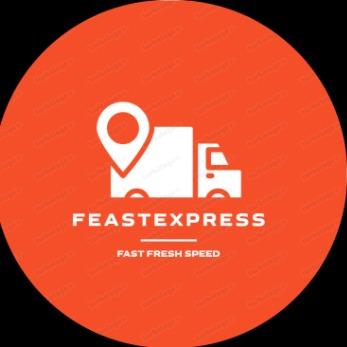Feast Express
FeastExpress, a pioneering mobile e-commerce app, revolutionizes the food delivery landscape through geospatial intelligence, further optimizes route planning, ensuring efficient and timely delivery.
Created on 7th March 2024
•
Feast Express
FeastExpress, a pioneering mobile e-commerce app, revolutionizes the food delivery landscape through geospatial intelligence, further optimizes route planning, ensuring efficient and timely delivery.
The problem Feast Express solves
FeastExpress is a cutting-edge mobile e-commerce application poised to transform the food delivery landscape through the strategic integration of geospatial intelligence. Positioned as an efficiency beacon, the app redefines the food e-commerce experience by seamlessly incorporating intelligent routing algorithms. This innovative approach ensures a streamlined and optimized delivery process for both buyers and sellers.
Key pillars of FeastExpress include a commitment to precision, speed, and cost-effectiveness. The application places a strong emphasis on precise location tracking, facilitating accurate and reliable delivery services. Speed is prioritized in the delivery process, ensuring timely and efficient order fulfillment. Moreover, FeastExpress is designed with cost-effectiveness in mind, optimizing operational efficiency to provide a competitive edge in the food delivery market.
One of FeastExpress's standout features is its transparent estimates, achieved through the implementation of reverse geocoding technology. This technology ensures accurate distance calculations, leading to reliable delivery time estimates. Users can plan their meals with confidence, knowing that FeastExpress provides a trustworthy and efficient platform for food e-commerce.
In summary, FeastExpress stands out as a revolutionary force in the industry, leveraging geospatial intelligence to redefine food e-commerce through intelligent routing, precision in location tracking, speed in delivery, and overall cost-effectiveness. The transparent estimates powered by reverse geocoding further enhance the user experience, making FeastExpress a beacon of innovation in the world of mobile food delivery applications.
Challenges we ran into
-
Geospatial Complexity:
The integration of geospatial intelligence posed a significant challenge. Accurate location tracking and intelligent routing algorithms demanded a robust understanding of geospatial data, coordinate systems, and the intricacies of mapping technologies. -
Intelligent Routing Algorithms:
Crafting intelligent routing algorithms that seamlessly optimized delivery routes was a substantial hurdle. Balancing precision, speed, and cost-effectiveness required iterative refinement. -
Reverse Geocoding Accuracy:
Ensuring accurate distance calculations for transparent delivery estimates through reverse geocoding was a persistent challenge. The intricacies of converting coordinates to meaningful location data and handling variations in addressing formats demanded meticulous attention to detail to provide users with reliable delivery time estimates. -
Polygon Creation for Delivery Locations:
Creating polygons encompassing delivery locations presented challenges in defining spatial boundaries accurately. Addressing variations in geographic data and ensuring the polygon accurately covered all relevant delivery points required a thorough understanding of geospatial mathematics and robust programming solutions.
Tracks Applied (1)
Ethereum Track
ETHIndia
